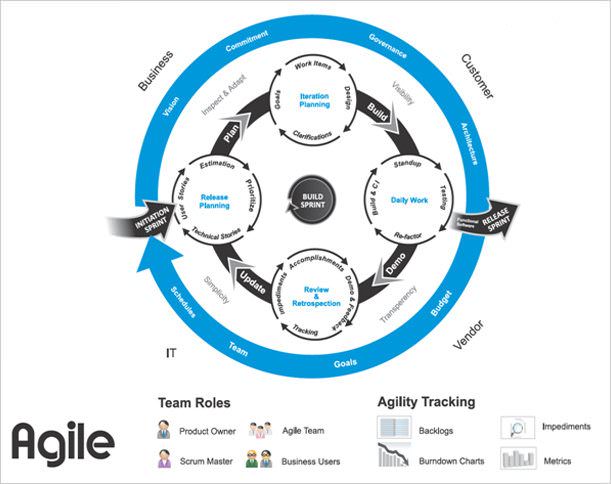The conventional approach towards software development seeks to develop the software just as a car is built on an assembly line—by systematic and planned addition of all parts and components.
However, the waterfall approach that placed excessive emphasis on documentation, and treated design and coding as independent and exclusive tasks led numerous problems including delayed execution, poor quality, and instances of applications becoming obsolete even before it was released.
The Agile Manifesto, signed in 2001, marked a shift to a more collaborative and evolutionary approach towards software development. Agile application development involves creating of self-managing and cross-functional teams that collaborate with each other to design and code the program in multiple iterations. While agile development has become very popular, it is not a perfect methodology. Read ahead for an overview of the pros and cons of the agile application methodology.
The Pros
The biggest advantage of this method is its versatility and agility. Unlike a waterfall approach where even a minor change in design after commencement of coding can lead to disastrous consequences, the agile method allows for the design to be improved upon in a continuous manner. This agility and flexibility ensures the finished product is a high quality one that meets the requirements of the client.
Secondly, collaboration between cross-functional teams ensures a wide range of inputs are available at all times. Agility provides for the possibility of quality issues by allowing space for the design to evolve through teamwork.
Agile development methods encourage teams to be more proactive and innovative in solving design and coding issues. Instead of the development process taking place in exclusive watertight compartments, free exchange of information and ideas ensure a healthy and efficient working environment. This can drastically shorten the development timeframe and boost efficiency and profitability.
Sequential iterations where each successive version of the software is better than the previous version ensures the program is thoroughly tested and validated before it is delivered to the customer. The fact that all iterations are tested makes it easier to identify the point where flaws crept into the coding or design process.
The agile methodology is designed to function in a dynamic and variable environment. External factors like introduction of newer technologies, change in budget, or change in the requirements or preferences of the customer can be incorporated without having to restart work from scratch.
The Cons
However, this does not mean agile development is not without its risks or disadvantages. For starters, the fluid and dynamic approach makes it very difficult for effective control during the WIP stage. There is a possibility of the team losing sight of the bigger picture by focusing too closely on a single iteration of the software under development.
Secondly, close collaboration between multiple cross-functional teams requires clear communication and complete trust for the process to move ahead. Interpersonal issues can have a huge impact on the development process. Inability to identify the team responsible for a particular error or misstep can lead to a long blame game where productivity suffers.
Thirdly, agile process may not get incorporated with other non-agile processes like HR management and budget allocation. This may result in a setup where the development process is originally intended to be agile but ends up as a mix of agile and waterfall development.
Finally, while waterfall process may have erred by focusing too much on documentation, the complete absence of formal design documentation in the agile process can lead to numerous future complications, especially for small and medium-sized enterprises.
Conclusion
While suitable in theory, the agile process has its own set of risks and challenges that can affect the software development process. A holistic approach combined with emphasis on proactive management can help the organization enjoy the numerous benefits of developing software through agile methodologies.
To know more about Agile Application Development please click here


